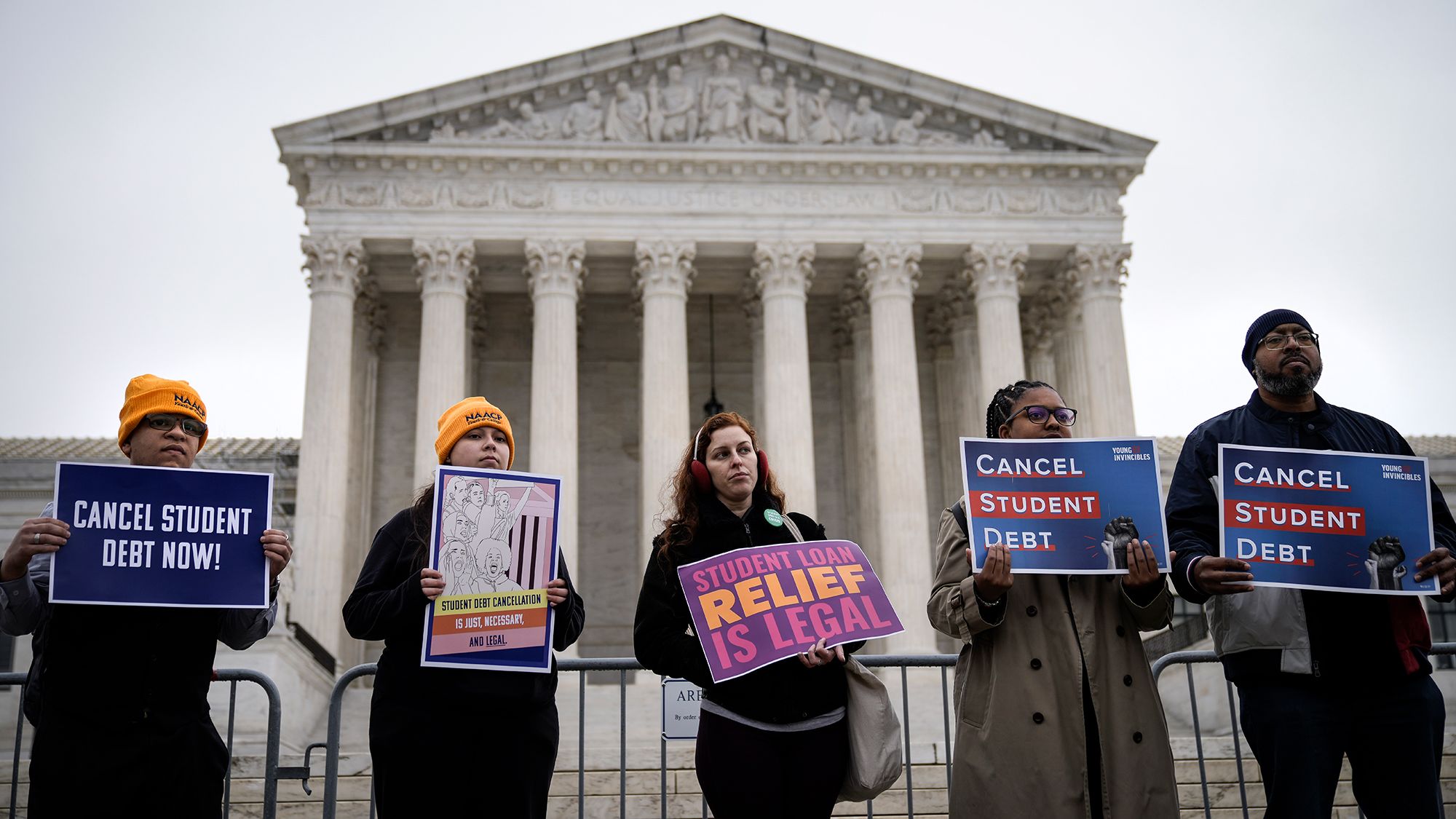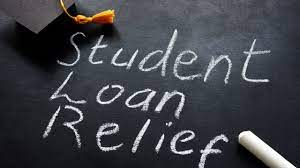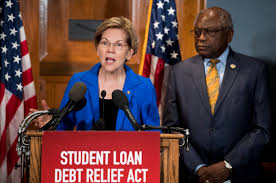

Higher education has long been considered a gateway to success, offering opportunities for personal growth, career advancement, and a better quality of life. However, the rising cost of college tuition has left many students burdened with substantial debt after graduation. As the weight of student loans stifles the dreams and aspirations of countless individuals, the need for student loan relief becomes increasingly urgent. In this article, we explore the importance of student loan relief and various strategies that can be implemented to ease the financial burden on graduates.
The Student Loan Crisis
Over the past few decades, the cost of higher education in many countries has outpaced inflation, leading to an overwhelming increase in student loan debt. According to the Federal Reserve, the total outstanding student loan debt in the United States alone reached a staggering $1.7 trillion in 2021, affecting more than 45 million borrowers. This crisis not only impacts individual borrowers but also has broader implications for the economy, hindering economic growth, homeownership, and retirement savings.
Effects of Student Loan Debt
Delayed Financial Independence: High student loan debt often forces recent graduates to postpone important life milestones, such as buying a home or starting a family, as they struggle to manage their financial obligations.
Mental and Emotional Stress: Dealing with the weight of student loan debt can lead to anxiety, stress, and even depression, affecting borrowers' overall well-being and mental health.
Limited Career Choices: Graduates with significant debt may feel compelled to prioritize higher-paying jobs over their passion or desired career path, potentially hindering personal growth and job satisfaction.
Reduced Economic Growth: Heavy student loan debt can limit consumer spending, leading to reduced economic activity and investment in other areas of the economy.
Strategies for Student Loan Relief
Loan Forgiveness Programs: Governments can implement loan forgiveness programs that forgive a portion or all of the outstanding student loan debt for eligible borrowers. These programs could be targeted towards certain professions (e.g., public service, teaching) or tailored to assist low-income individuals.
Income-Driven Repayment Plans: Income-driven repayment plans calculate monthly loan payments based on borrowers' income and family size, making loan repayments more manageable for those with lower incomes.
Lowering Interest Rates: Reducing interest rates on existing student loans can significantly alleviate the burden of repayment and help borrowers pay off their debt faster.
Financial Literacy Education: Implementing comprehensive financial literacy programs can equip students with the knowledge and skills to make informed decisions about borrowing and managing their finances during and after college.
Employer Assistance: Employers can offer student loan assistance as part of their benefits package, helping employees repay their loans faster and reducing financial stress.
Tuition-Free or Reduced-Cost Higher Education: Governments and institutions can explore options to provide tuition-free or reduced-cost higher education to make college more accessible and reduce the need for significant student loans.
Enhanced Loan Forgiveness Programs:
a. Targeted Occupations: Expanding loan forgiveness programs to include a wider range of professions, especially those facing critical shortages or contributing significantly to public welfare, can attract talented individuals to essential fields. This might include healthcare workers in underserved areas, scientists in research and development, and teachers in low-income schools.
b. Volunteer-Based Forgiveness: Introducing volunteer-based forgiveness programs where graduates can offer their skills and expertise to non-profit organizations or community projects in exchange for partial loan forgiveness. This approach not only reduces debt but also encourages civic engagement and social responsibility.
Refinancing and Interest Rate Capping: a. Federal Refinancing Options: Introducing federal refinancing programs that allow borrowers to refinance their student loans at lower interest rates could provide substantial relief. This way, borrowers can save money on interest payments and potentially pay off their loans faster.
b. Interest Rate Caps: Implementing caps on interest rates for student loans can prevent lenders from charging exorbitant rates, thereby ensuring that borrowers are not overwhelmed by ever-increasing interest burdens.
Employer-Government Partnerships: a. Tax Incentives for Employers: Governments can offer tax incentives to companies that provide student loan repayment assistance to their employees. This encourages employers to participate in addressing the student debt crisis and eases the financial strain on graduates.
b. Government-Matched Contributions: Governments can collaborate with employers to establish matching programs where the government matches a percentage of the employer's student loan repayment contributions, further reducing the overall debt load.
Improved College Affordability:
a. Cost Transparency: Educational institutions can improve transparency by clearly outlining the true cost of attending college, including tuition, fees, and living expenses. This helps students make informed decisions about their education and borrowing options.
b. Increased Grant Aid: Governments and institutions can invest in need-based grants and scholarships to provide financial assistance to students from low-income families. This reduces reliance on loans and fosters a more equitable education system.
Flexibility in Loan Repayment:
a. Grace Period Extension: Extending the grace period after graduation before loan repayment begins can offer graduates valuable time to secure stable employment and establish a financial plan.
b. Temporary Loan Deferment: Introducing temporary deferment options during unforeseen financial hardships, such as unemployment or medical emergencies, ensures that borrowers are not penalized for circumstances beyond their control.

The student debt crisis has become an alarming issue affecting millions of young people worldwide. The soaring cost of higher education, coupled with limited financial aid and job prospects, has left graduates burdened with crippling debt that inhibits their financial independence and personal growth. To combat this crisis, society must come together to explore innovative solutions that empower students to pursue their educational dreams without the fear of lifelong financial struggles. In this article, we will examine some promising student debt solutions that can pave the way for a brighter future for both students and economies alike.
Income-Share Agreements (ISAs)
Income-Share Agreements (ISAs) are a forward-thinking approach that offers an alternative to traditional student loans. With ISAs, students receive funding for their education in exchange for agreeing to pay a percentage of their future income for a fixed period after graduation. Unlike loans, ISAs do not accumulate interest, providing a more manageable and transparent repayment plan. This approach aligns the interests of both students and investors, as graduates' payments are directly tied to their income, ensuring a fair and proportional burden based on their financial success.
Tuition-Free and Low-Cost Higher Education
Countries that offer tuition-free or heavily subsidized higher education have seen significant success in reducing student debt. By investing in education as a public good, governments can remove the financial barrier to entry, opening up opportunities for students from all socioeconomic backgrounds. This approach fosters a more educated workforce and creates a positive cycle of economic growth as graduates can invest their income back into the economy, leading to increased productivity and higher earning potential for future generations.
Public-Private Partnerships for Loan Repayment
Public-private partnerships can play a vital role in alleviating the burden of student debt. Governments can collaborate with private organizations to establish loan repayment assistance programs, where companies offer financial aid or grants to graduates in exchange for their expertise or service in targeted fields. This approach not only encourages students to pursue careers in critical sectors such as healthcare and education but also helps reduce the financial strain of loan repayment.
Enhanced Financial Literacy Education
Equipping students with comprehensive financial literacy education is crucial in empowering them to make informed decisions about student loans and financial planning. High schools and colleges should integrate financial literacy courses into their curriculum, educating students on budgeting, managing debt, and exploring alternative funding options for their education. Armed with this knowledge, students can better navigate the complexities of student loans and avoid unnecessary debt.
Employer-Provided Student Loan Assistance
Employers can contribute to tackling the student debt crisis by offering student loan assistance as part of their benefits package. This benefit not only attracts top talent but also supports employees in paying off their loans faster. By partnering with financial institutions, employers can design flexible assistance programs tailored to individual employees' needs, reducing financial stress and increasing employee satisfaction and retention.
Loan Refinancing and Interest Rate Reduction
Governments and financial institutions can collaborate to provide opportunities for graduates to refinance their loans at lower interest rates. Refinancing allows borrowers to consolidate their loans and potentially secure a more favorable repayment plan. Lowering interest rates can also significantly alleviate the burden of repayment and accelerate the loan payoff process, enabling graduates to focus on other financial goals, such as homeownership and retirement.
Loan Repayment Based on Income and Capacity
Implementing a loan repayment system based on income and repayment capacity can significantly ease the burden of student debt. This approach would ensure that graduates are not overwhelmed by large monthly payments, especially during early career stages when incomes may be lower. By structuring loan repayments as a percentage of income, graduates can contribute a reasonable amount towards their debt while having the flexibility to adjust payments as their earnings increase over time.
Student Loan Rehabilitation Programs
For borrowers who have fallen behind on their loan payments, student loan rehabilitation programs can provide a second chance to regain financial stability. These programs typically involve agreeing to a reasonable repayment plan with the lender, which, once successfully completed, can remove the default status from the borrower's credit history. Rehabilitation programs offer borrowers an opportunity to get back on track, rebuild their credit, and secure their financial future.
Crowdfunding and Community Support
Community-driven initiatives, such as crowdfunding campaigns and scholarship funds, can play a vital role in supporting students facing financial hardships. These platforms allow individuals, organizations, and alumni to contribute to students' education expenses, reducing the need for excessive borrowing. Moreover, fostering a sense of community support around education can create a positive impact on society, encouraging individuals to invest in the next generation's success.
Student Loan Discharge in Cases of Extreme Hardship
Exploring the possibility of discharging student loans in cases of extreme financial hardship could offer relief to borrowers facing insurmountable challenges. While loan discharge should be carefully regulated to prevent abuse, it can be a lifeline for those dealing with severe economic difficulties, ensuring they are not burdened with unmanageable debt for the rest of their lives.
Global Collaboration and Research
The student debt crisis is a global challenge, and countries can benefit from collaborating and sharing best practices to address this issue effectively. Governments, educational institutions, and international organizations can come together to conduct research and share insights on innovative approaches, successful policies, and lessons learned. By learning from one another's experiences, we can develop more comprehensive and impactful solutions to the student debt crisis.
Long-Term Economic Investments
Addressing the student debt crisis is not only about providing immediate relief but also making long-term investments in education and the workforce. Governments should invest in high-quality education at all levels, ensuring that students receive relevant and competitive skills that match the demands of the job market. A well-educated and skilled workforce will lead to increased economic growth and reduced reliance on student loans in the future.

The burden of student debt has become an increasingly pressing issue for graduates across the globe. The rising cost of higher education, combined with limited financial aid and job opportunities, has left many students drowning in debt and struggling to find financial stability after graduation. In response to this crisis, various solutions and relief options have emerged to ease the burden of student loans and provide a path to financial freedom.
Federal Student Loans and Forgiveness Programs:
Federal student loans are loans issued by the government to help students finance their education. They often come with lower interest rates and more flexible repayment options compared to private loans. The government also offers forgiveness programs for borrowers who work in public service or certain professions. Public Service Loan Forgiveness (PSLF) is one such program that forgives the remaining student loan balance after 120 qualifying monthly payments while working full-time for a qualifying employer.
Private Loan Debt Relief and Refinancing:
Private student loans are issued by private financial institutions and usually have higher interest rates and less favorable terms than federal loans. However, some private lenders offer debt relief options and loan refinancing. Refinancing involves consolidating existing loans into a new loan with better terms, potentially leading to lower interest rates and more manageable payments.
Income-Driven Repayment Plans:
Income-Driven Repayment (IDR) plans are available for both federal and private student loans. These plans calculate monthly payments based on the borrower's income and family size, ensuring that loan payments remain affordable and proportionate to their earnings. After a certain period, any remaining debt may be forgiven, depending on the specific IDR plan.
Student Loan Rehabilitation Programs:
For borrowers who have defaulted on their federal student loans, rehabilitation programs provide an opportunity to restore their loans to good standing. By making a series of agreed-upon, affordable payments, borrowers can exit default status and regain eligibility for benefits like deferment, forbearance, and income-driven repayment plans.
Student Loan Discharge in Cases of Extreme Hardship:
In rare cases of extreme financial hardship, borrowers may be eligible for student loan discharge. This discharge option is usually available for borrowers who have a severe disability, are unable to work due to significant health issues, or face other extreme circumstances that make repaying the loans nearly impossible.
Tuition-Free or Low-Cost Higher Education:
Countries and institutions that offer tuition-free or heavily subsidized higher education can significantly reduce the need for students to take on large loans. By making education more accessible, such programs empower students to pursue their dreams without accumulating substantial debt.
Employer and Community Support:
Some employers offer student loan assistance as part of their benefits package, helping employees reduce their debt burden. Additionally, community-driven initiatives, such as crowdfunding campaigns and scholarship funds, can offer financial support to students facing financial challenges.
Enhanced Financial Counseling:
Improving financial counseling services for students can help them make more informed decisions about borrowing and managing their student loans. Educational institutions and loan servicers can offer personalized counseling sessions to students, covering topics such as loan options, budgeting, debt management, and long-term financial planning. By providing comprehensive guidance, students can better understand the implications of their loan choices and develop responsible borrowing habits.
Automatic Enrollment in Income-Driven Repayment Plans:
To ensure that borrowers have access to income-driven repayment plans, automatic enrollment can be implemented as a default option for all federal student loan recipients. By doing so, borrowers who may be struggling financially will be automatically placed in plans that align with their income levels, reducing the risk of default and providing them with a more manageable path to repayment.
Transparent Loan Disclosure:
Educational institutions and loan providers should enhance transparency in loan disclosure, ensuring that students fully understand the terms and conditions of their loans. Clear information about interest rates, repayment schedules, and potential loan forgiveness options should be readily accessible to borrowers, empowering them to make responsible borrowing decisions.
Public Awareness Campaigns:
Governments and educational organizations can launch public awareness campaigns to educate students and their families about student loan options, financial aid resources, and loan repayment strategies. By promoting financial literacy and spreading awareness about available resources, more students can navigate the complex landscape of student loans effectively.
Research and Data-Driven Policies:
Governments and policymakers should invest in research to better understand the impact of student loan debt on individuals and the economy. Data-driven insights can lead to more effective policies that address the root causes of the student debt crisis, creating solutions tailored to specific demographics and financial situations.
Continued Support for Loan Forgiveness Programs:
Loan forgiveness programs, such as Public Service Loan Forgiveness, should be continuously supported and expanded to incentivize graduates to pursue careers in critical fields, such as healthcare, education, and public service. Encouraging and rewarding public service can lead to a more skilled and committed workforce addressing societal needs.
Advocacy for Legislative Changes:
Advocacy groups, educators, and policymakers can collaborate to push for legislative changes that address the student debt crisis comprehensively. This may include advocating for lower interest rates on federal student loans, increased federal funding for education, or the expansion of loan forgiveness programs.

Q: What is student loan relief?
A: Student loan relief refers to various programs, policies, and strategies aimed at easing the burden of student loan debt for borrowers. These relief options may include loan forgiveness, income-driven repayment plans, loan refinancing, employer assistance, tuition-free education, and other initiatives designed to help graduates manage their student loan obligations more effectively.
Q: How can I qualify for student loan relief?
A: Qualification for student loan relief depends on the specific relief programs and options available. Some common qualifications may include working in public service or certain professions for loan forgiveness, demonstrating financial need for income-driven repayment plans, or meeting specific criteria set by lenders or government agencies for various relief initiatives.
Q: Are federal student loans eligible for relief programs?
A: Yes, federal student loans are eligible for a wide range of relief programs. These may include income-driven repayment plans, Public Service Loan Forgiveness (PSLF), loan rehabilitation, and other initiatives offered by the U.S. Department of Education to help borrowers manage their federal student loan debt.
Q: Can private student loans receive relief as well?
A: Private student loans do not typically qualify for federal relief programs. However, some private lenders may offer their own relief options, such as loan refinancing with better terms or temporary forbearance during financial hardships. It's essential for borrowers to check with their private loan servicers to explore available relief alternatives.
Q: How does income-driven repayment (IDR) help with student loan relief?
A: Income-driven repayment plans adjust the monthly loan payments based on the borrower's income and family size. These plans typically cap the monthly payment at a percentage of the borrower's discretionary income, making it more manageable, especially for those with lower incomes. After a certain period (usually 20-25 years), any remaining balance may be forgiven for borrowers on IDR plans.
Q: Can student loan relief completely erase my debt?
A: While student loan relief programs can significantly reduce the burden of debt, not all relief options guarantee complete debt erasure. Loan forgiveness programs like PSLF require meeting specific criteria, such as working in qualifying jobs for a specified period. However, income-driven repayment plans may lead to forgiveness of any remaining balance after a certain repayment period.
Q: How can I apply for student loan relief?
A: The process of applying for student loan relief depends on the specific relief program. For federal student loan relief, borrowers can contact their loan servicer or visit the official U.S. Department of Education website to explore available options and submit applications. Private loan borrowers should directly contact their loan servicers or lenders to inquire about potential relief programs.
Q: Can student loan relief affect my credit score?
A: Generally, participating in student loan relief programs should not negatively impact your credit score. However, it's crucial to maintain good communication with your loan servicer, stay current on any payment arrangements, and fulfill program requirements to ensure a positive impact on your credit standing.
Q: Is student loan forgiveness taxable?
A: In certain cases, student loan forgiveness may be considered taxable income by the Internal Revenue Service (IRS). For example, if a borrower receives loan forgiveness through an income-driven repayment plan after the required repayment period, the forgiven amount may be taxable. It's advisable to consult a tax professional for specific guidance on your situation.
Q: Can student loan relief options change over time?
A: Yes, student loan relief options and policies can change over time due to updates in legislation, government initiatives, or changes in lending practices. Borrowers should stay informed about the latest updates and changes to take advantage of new relief opportunities that may become available.
Q: Can I combine multiple student loans for relief purposes?
A: Yes, borrowers with multiple federal student loans can consolidate them into a Direct Consolidation Loan. Loan consolidation allows you to combine your loans into a single loan with a fixed interest rate, making it easier to manage payments. However, it's essential to consider potential trade-offs, such as losing certain borrower benefits or progress toward loan forgiveness if you have already been making qualifying payments.
Q: Are there any relief options for borrowers facing financial hardships?
A: Yes, borrowers experiencing financial hardships can explore options such as deferment or forbearance. Deferment allows borrowers to temporarily suspend their loan payments due to specific qualifying circumstances, such as enrollment in school, unemployment, or economic hardship. Forbearance provides a temporary pause or reduction in loan payments, typically granted at the discretion of the loan servicer.
Q: What are the potential consequences of defaulting on student loans?
A: Defaulting on student loans can have serious consequences, including damage to your credit score, collection efforts, and potential wage garnishment. Defaulting can also lead to losing eligibility for certain relief options. It's crucial to communicate with your loan servicer if you are facing difficulties in making payments to explore alternative repayment plans or assistance programs.
Q: Can student loan relief be retroactive?
A: Some relief options, like Public Service Loan Forgiveness, may be retroactive if you meet the eligibility criteria and have made qualifying payments in the past. However, not all relief options are retroactive, and borrowers should carefully review the specific requirements of each program.
Q: How can student loan relief impact my long-term financial future?
A: Student loan relief can have significant implications for your long-term financial future. Options like income-driven repayment plans and loan forgiveness can make loan repayment more manageable and potentially free up funds for other financial goals, such as saving for a home or retirement. On the other hand, extending loan repayment terms through relief options may lead to paying more in interest over time.
Q: Can student loan relief affect my ability to secure other loans, such as a mortgage?
A: Participating in student loan relief programs should not directly impact your ability to secure other loans, like a mortgage. However, lenders will consider your overall financial situation, including your debt-to-income ratio and credit history when evaluating loan applications. Staying current on your loan payments and managing your debt responsibly will generally have a positive effect on your creditworthiness.
Q: Are there any student loan relief options for recent graduates?
A: Yes, recent graduates can explore various relief options, including income-driven repayment plans, loan forgiveness programs, and deferment or forbearance if facing financial hardship. It's essential to reach out to your loan servicer to discuss your specific circumstances and explore relief options that align with your current financial situation.
Q: How can I stay updated on changes to student loan relief programs?
A: Staying informed about changes to student loan relief programs can be crucial. Regularly check official government websites, contact your loan servicer for updates, and subscribe to reputable financial news sources. Participating in financial aid workshops or seeking guidance from a financial advisor can also help you stay informed about the latest relief options and changes in the student loan landscape.
Q: Can private lenders offer student loan forgiveness?
A: Private lenders generally do not offer loan forgiveness programs similar to those provided for federal student loans. However, private lenders may have their own hardship assistance or repayment plans to help borrowers facing financial difficulties. It's essential to directly communicate with your private lender to explore any available relief options.

| Car Insurance |
| Homeowners Insurance |
| Life Insurance Plan |
| Commercial Insurance Brokers |
| Pet Insurance Plan |
| Renters Insurance Plan |
| Best Credit Cards |
| AAA Trip Interruption |
© Insurance Life Plan. All Rights Reserved. POWERD BY ![]()